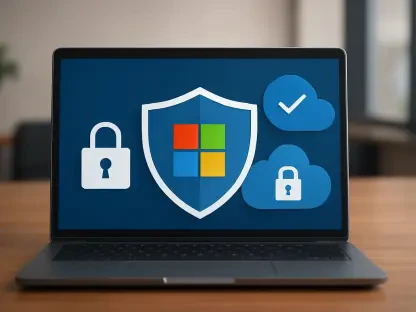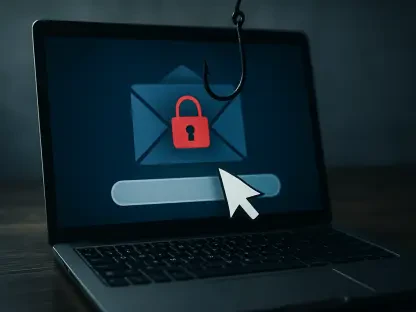Unmasking a Persistent Cyber Threat
In an era where digital borders are as critical as physical ones, a staggering statistic reveals that state-backed cyber-espionage campaigns account for a significant portion of global data breaches, targeting sensitive sectors with alarming precision. Among these shadowy operations, one threat actor stands out for its sophisticated phishing tactics and relentless pursuit of intelligence. This review delves into the technology behind a prominent Iran-linked group’s phishing campaign, exploring how their methods exploit trusted channels to infiltrate high-value targets. The focus is on dissecting the tools and malware that enable such attacks, shedding light on a pressing challenge in cybersecurity.
This analysis aims to unpack the intricate mechanisms of the phishing technology deployed by this group, often associated with state-aligned motives. By examining the specific tools and tactics, a clearer picture emerges of how cyber-espionage continues to evolve in response to defensive advancements. The goal is to provide a comprehensive understanding of these threats and their implications for international organizations and critical infrastructure.
Technical Breakdown of Phishing Mechanisms
Exploiting Trusted Communication Channels
At the heart of this phishing technology lies the cunning use of compromised email accounts, accessed via legitimate services like NordVPN to conceal the attackers’ identities. These accounts, often belonging to real individuals or organizations, are transformed into launchpads for deceptive emails that mimic authentic correspondence. This method capitalizes on the inherent trust users place in familiar communication, significantly increasing the chances of victims engaging with malicious content.
The psychological manipulation embedded in this approach cannot be overstated. By leveraging a known email address, the attackers create a false sense of security, prompting recipients to lower their guard. This tactic underscores the challenge of distinguishing between genuine and fraudulent messages, especially when the source appears credible at first glance.
Malicious Attachments as Entry Points
Central to the attack vector is the deployment of disguised Microsoft Word documents, which serve as carriers for malicious payloads. These attachments prompt users to enable macros, a seemingly harmless action that triggers the execution of Visual Basic code. Once activated, this code installs a backdoor known as Phoenix v4, granting attackers remote control over compromised systems.
What makes this technique particularly insidious is its ability to bypass many traditional security measures. By exploiting user interaction as the activation mechanism, the technology evades static defenses that rely on signature-based detection. This highlights a critical vulnerability in systems where human error becomes the weakest link in the security chain.
Advanced Malware and Toolset Analysis
Phoenix v4 Backdoor: A Persistent Threat
Among the standout components of this phishing arsenal is the Phoenix v4 backdoor, a malware variant engineered for long-term access to infected systems. Its persistence mechanisms include modifications to registry keys, ensuring that the malware remains active even after system reboots. Additionally, it establishes connections to command-and-control (C2) servers, allowing attackers to issue commands and exfiltrate data over extended periods.
The sophistication of Phoenix v4 lies in its ability to blend into normal system operations, making detection a formidable challenge. Its design facilitates sustained espionage, enabling the collection of sensitive information from targeted networks. This capability positions it as a cornerstone of the group’s strategy to maintain a foothold in compromised environments.
Leveraging Legitimate Tools for Illicit Access
Beyond custom malware, the attackers employ legitimate remote monitoring and management (RMM) tools such as PDQ, Action1, and ScreenConnect to gain unauthorized access. These widely used software solutions, intended for legitimate IT administration, are repurposed to navigate internal networks and execute commands discreetly. This misuse complicates efforts to identify malicious activity, as the tools themselves are not inherently suspicious.
Complementing these RMM tools is a custom credential stealer dubbed Chromium_Stealer, masquerading as a calculator application. This deceptive software targets login data from popular browsers like Chrome, Edge, Opera, and Brave, harvesting credentials for further exploitation. The dual approach of using trusted tools and tailored malware exemplifies the layered complexity of this cyber-espionage technology.
Broader Implications and Evolving Tactics
Trends in State-Aligned Cyber Operations
A notable trend in the landscape of cyber-espionage is the increasing reliance on trusted communication channels and legitimate services to evade detection. State-aligned actors continuously adapt their phishing technologies to exploit these avenues, undermining conventional security protocols. This shift poses a significant hurdle for organizations striving to protect sensitive data amid growing geopolitical tensions.
The focus on sectors such as governmental bodies, humanitarian organizations, and critical infrastructure reveals a strategic intent behind these campaigns. By targeting entities with access to high-value intelligence, the technology serves broader geopolitical objectives, amplifying the stakes for global security. This pattern suggests a future where such tactics become even more prevalent, necessitating innovative countermeasures.
Challenges in Countering Sophisticated Threats
Defending against this phishing technology presents multifaceted challenges, particularly in detecting compromised accounts and distinguishing legitimate tool usage from malicious activity. Traditional security frameworks often struggle to keep pace with the nuanced methods employed, as attackers leverage the ambiguity of trusted systems to their advantage. This gap in detection capabilities leaves many organizations vulnerable to prolonged breaches.
Moreover, the geopolitical motivations driving these campaigns add a layer of complexity to mitigation efforts. Addressing the threat requires not only technical solutions but also international cooperation to tackle the root causes of state-backed espionage. The evolving nature of the technology demands adaptive defenses that can anticipate and respond to new attack vectors.
Final Thoughts and Path Forward
Looking back, the exploration of this phishing technology revealed a meticulously crafted ecosystem of tools and tactics designed for stealth and persistence. The use of compromised email accounts, advanced malware like Phoenix v4, and repurposed legitimate software painted a picture of a highly capable threat actor. The impact on targeted sectors underscored the urgent need for enhanced cybersecurity measures to combat such sophisticated campaigns.
Moving forward, organizations must prioritize actionable strategies to mitigate these risks, such as disabling Office macros by default and deploying endpoint detection and response (EDR) solutions. Conducting regular phishing simulations can bolster user awareness, while vigilant monitoring for indicators of compromise remains essential. As the landscape of cyber-espionage continues to shift, fostering global collaboration and investing in cutting-edge defenses will be critical to staying ahead of evolving threats.









